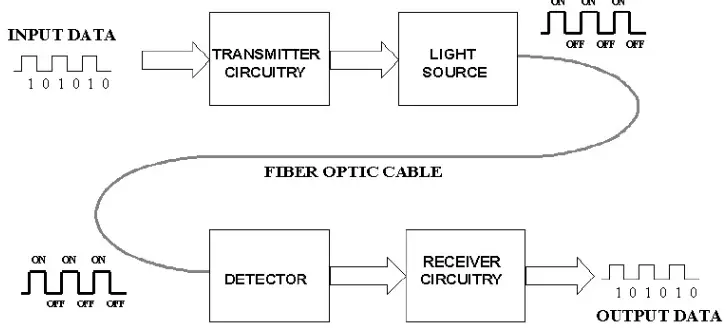Optical communication systems have become a cornerstone for transmitting high-quality information. These systems efficiently transmit both analog and digital signals, offering an integrated communication platform. Since their commercial application in the 1970s, various optical communication systems have been established globally, becoming a primary medium for data transmission due to their unparalleled efficiency. Optical communication systems are now considered the most optimal mode for public communication networks.

Types of Optical Communication Systems
1. Analog Optical Fiber Communication System
Analog optical communication systems are ideal for non-critical, cost-sensitive applications, often used in cases such as cable television transmission and data broadcasting. These systems are categorized into three modulation types:
- Direct Intensity Modulation (D-IM): In this system, light intensity directly follows the variations of the input analog signal. The setup includes a light source such as an LED or LD, an optical fiber, and a photodetector. Although simple and cost-effective, D-IM systems are typically limited in range and best suited for short-distance applications.
- Frequency Modulation (FM): FM systems modulate the analog baseband signal onto a carrier frequency for transmission. These systems offer better noise immunity compared to D-IM systems. They are particularly useful for multi-channel optical fiber communications.
- Pulse Frequency Modulation (PFM): PFM modulation encodes information into the frequency of light pulses. This method is highly efficient for medium-to-long-distance transmission, reaching up to 30 km for multimode fibers and 50 km for single-mode fibers.
2. Digital Optical Fiber Communication System
Digital optical communication systems are the idealized form of data transmission. Compared to analog systems, digital systems excel in anti-interference capability, high fidelity, and noise reduction. They are the backbone of modern telecommunication networks.
Key Features:
- Higher signal integrity
- Advanced error correction techniques
- Ability to integrate seamlessly with digital networks
Multiplexing Techniques
To optimize the use of bandwidth, optical communication systems rely on multiplexing techniques:
- Time-Division Multiplexing (TDM): TDM combines multiple digital signals by interleaving time slots, optimizing data transfer over a single channel.
- Frequency-Division Multiplexing (FDM): FDM separates signals into distinct frequency bands, ensuring simultaneous analog and digital signal transmission.
- Subcarrier Multiplexing (SCM): SCM allows the transmission of multiple subcarrier-modulated signals, increasing system efficiency and bandwidth utilization.
Advantages of Optical Communication Systems
- High Bandwidth: Optical systems support high data rates, exceeding those of traditional communication systems.
- Long-Distance Transmission: With advancements in modulation and amplification, these systems achieve remarkable transmission ranges.
- Cost Efficiency: Reduced need for intermediate signal boosters translates to lower infrastructure costs.
Conclusion
Modern optical communication systems are an indispensable component of global networks. With continuous advancements, these systems offer unmatched reliability, efficiency, and scalability, meeting the ever-growing demand for high-speed data transmission.





